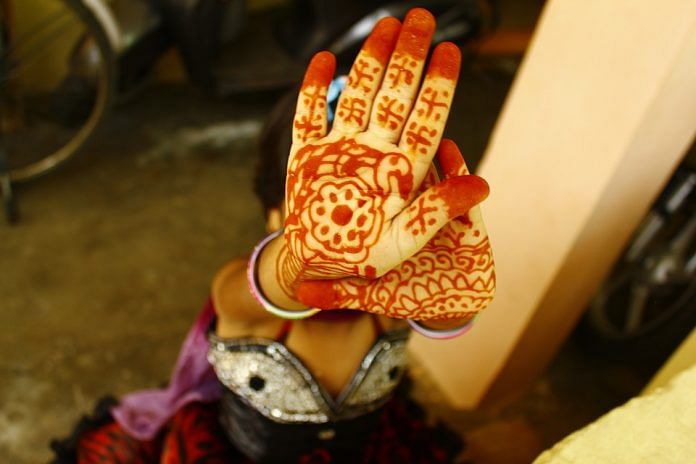An age-old ritual of exchanging brides is one of the biggest challenges Haryana faces in its battle to restore the rights of the girl child.
New Delhi: Some families in Haryana are bartering their daughters, at times as young as six, in marriage to families with potential brides for their sons.
Atta-satta, an age-old practice that still serves as a catalyst for child marriage, is on the radar of the Haryana government as the state battles years-old infamy over its mistreatment of the girl child and women.
It is a kind of barter where two families marry their daughters into each other’s homes to save wedding costs.
“They think that they are getting their sons married in exchange for the daughters, who are seen as a liability,” said Karminder Kaur, a protection-cum-prohibition officer (PPO) at a women’s police station in Jind.
PPOs are district-level officials appointed by Haryana for the purpose of cracking down on domestic violence and child marriage.
Haryana is emerging as a textbook example of the perils of skewed gender growth. While the wide gender disparity has been linked to the state’s terrible record for sexual crimes such as gang rape, it has also led to a situation where families are striking frightening bargains to find a bride for their sons.
“It is because of such deals that girls as young as nine years old get bartered for marriage,” said Hema Kaushik, a PPO at Faridabad.
“Haryana has fewer girls (than boys)… When families cannot find their son a bride, they trade their daughter for a girl that will marry the son,” she added.
Also read: India maybe revolutionising, but when it comes to marriage, ‘middle-class morality’ wins
Battling child marriage in Haryana
Indian law prohibits marriage of girls aged under 18 and boys under 21, and such unions are voidable in the court of law.
According to data obtained from all the PPOs of Haryana, the number of child marriage cases registered in the state has risen from 71 in 2008 to 614 so far in 2018. The rise was 155 per cent between 2014 and 2018.
PPO Kaushik said this was a good sign as it meant people were coming forward to report child marriage.
The Haryana women and child development (WCD) ministry has been working towards eliminating child marriage in the state through a host of initiatives, including better education, better surveillance and counseling of children married off before the legal age.
There has been a greater focus on the initiatives since the BJP government launched — symbolically, from Haryana — the Beti Bachao Beti Padhao campaign in 2015.
Also read: When patriarchy meets smartphone pornography: Why tiny Haryana is India’s rape capital
According to PPO Kaur, police have often also tried to threaten families against marrying off minors, while counseling underage lovers who try to elope.
Police have also extended the crackdown to the larger wedding market, directing venue owners and music bands to reject offers involving child marriage.
“These measures have been especially effective in districts like Ambala and Faridabad. Other districts are yet to catch up,” she said, “We are trying to make people socially aware.”
‘Seven brides for seven grooms’
Many times, this exchange, also prevalent in Rajasthan, includes three couples, with the practice then called tigadda. Here, the exchange involves cousins from the extended families as well.
“These cases (of child marriage) are harder for us to crack because we have to break off three marriages at once,” Kaur told ThePrint.
She said she had dealt with around 25 such cases in Rohtak and nearly 60 in Jind over 10 years.
Advocate Neelam Sharma, who served as a PPO at Rewari until 2015, told ThePrint that she once broke off a wedding involving seven brides and grooms from two families. The youngest bride, she said, was six years old.



